How living green wall gardens improve mental and emotional health as well as physical health...
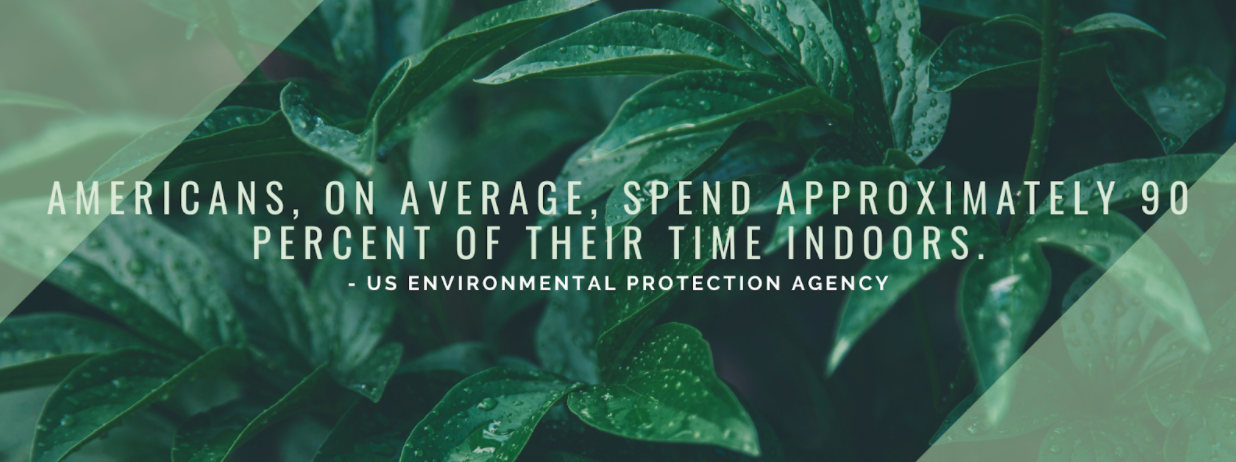
The concept of green wall gardens is not new. These stunningly beautiful climbing gardens have their roots -- no pun intended -- in Ancient Babylon. According to the Landscape Architects Network (LAND) article “Going Vertical: The History of Green Walls,” green wall gardens are “almost as old as cities” themselves. The first green wall gardens were likely found in Babylon, home of the famous “Hanging Gardens.” According to the LAND, the style of gardening continued past the ancient city of Babylon into countless countries and many later periods of history. The LAND article explains that “from Scandinavia to Japan, numerous civilizations used climbing plants to cover buildings.” Today, the benefits of green wall gardens are not well known outside of their aesthetic value. However, the benefits of green wall gardens are endless - from physical health to emotional wellbeing. Follow below to learn more about the many benefits of green wall gardens and where they originated.
A Brief History of Green Wall Gardens
Biophilia in the Arts and Crafts Movement
According to the Landscape Architects Network (LAND) article, modern green wall gardens came to prominence in the late 19th and early 20th centuries. The article explains that green wall gardens were “very important in the Arts and Crafts and Modern style movements in Europe.” The Victoria and Albert Museum notes that the Arts and Crafts movement in England began in response to increasing industrialization in Europe. According to the V&A article, “the birth of the Arts and Crafts movement in Britain in the late 19th century marked the beginning of a change in the value society placed on how things were made.” Motifs from nature and organic materials were important in both the English Arts and Crafts movement, and its American iteration.
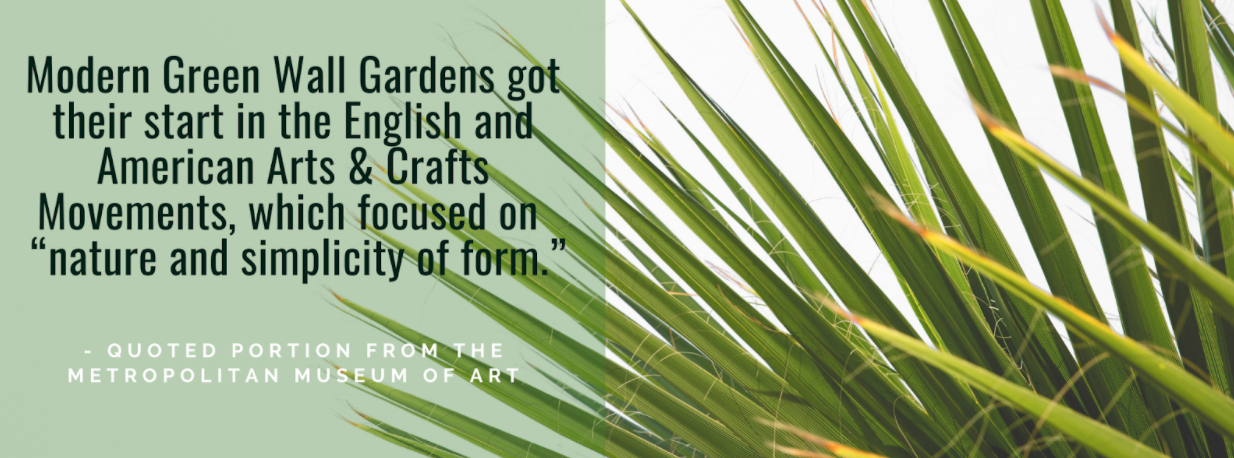
The Metropolitan Museum of Art explains that William Morris - a founder of the movement - and other leaders “strove to unite all the arts within the decoration of the home.” Arts and Crafts artists and artisans wanted to emphasize “nature and simplicity of form.” A focus in architecture was also placed on nature and organic materials, with architects like Frank Lloyd Wright praised for his “organic architecture...indebted to nature.” Unfortunately, modernity in America signaled a significant pause in biophilic living across the US. The Met explains that “the rise of urban centers and the inevitability of technology presaged the end of the Arts and Crafts movement” and the focus on organic architecture.
Renewed Interest in 20th Century America

In their article, LAND goes on to explain that “the use of climbing plants” and living walls declined after the 1920s in the US “due to new building techniques.” However, in the late 1930s, the United States began to shift back to nature - if only from an academic and theoretical standpoint. According to Grow Up Green Walls, researcher Stanley Hart White began to explore the benefits of green walls in the late 1930s. White was a professor at the University of Illinois - teaching in the Landscape Architecture school - when the idea struck him. Grow Up notes that the first vertical garden “as we know it was patented in 1938 by Stanley Hart White.” White named the gardens “botanical bricks” for their modularity. The units were “capable of being built up to any height” and are covered with “flowering vines” and other plants. White planned for the units to be used in “city yards, indoor gardens, and many other projects.”
21st Century Pioneers of Green Wall Gardens
In the late 20th century, a contemporary French botanist designed the first modern hydroponic green wall, encouraging Europe to take his lead. Patrick Blanc’s first green wall can still be seen at the Museum of Science and Industry, a hallmark of Europe’s turn towards green living. According to the article “VERTICAL GREENING IN CITIES: PATRICK BLANC LECTURES IN CHICAGO” from Hoerr Schaudt, Blanc’s gardens take many different forms and serve many different purposes. Today, in the 21st century, “Blanc’s presentations include an array of installations ranging from small gardens above doorways to entire skyscrapers.”
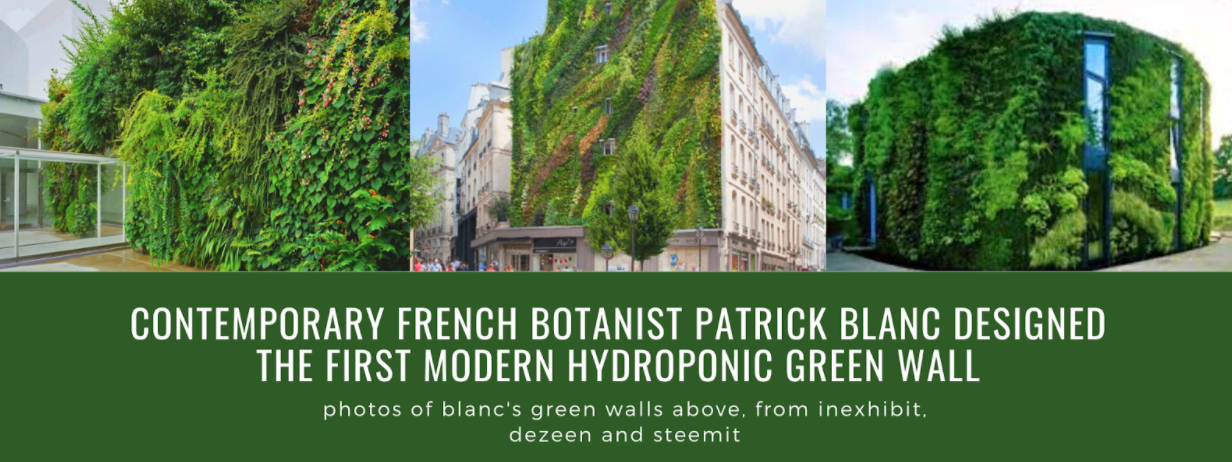
Some of the botanist’s larger designs “include hundreds of species of plants, some rare or exotic, [that all] grow vertically with ease.” To improve the success of his gardens, Blanc created a felt that can be penetrated by the roots but is “tight enough to transport water through the fabric from irrigation pumped to its support structure.” The technology Blanc has developed “allows for a multitude of configurations for vertical gardens.” His work has contributed to the increasingly “blurring line between landscape and architecture.”
The Benefits of Green Wall Gardens
Emotional Support
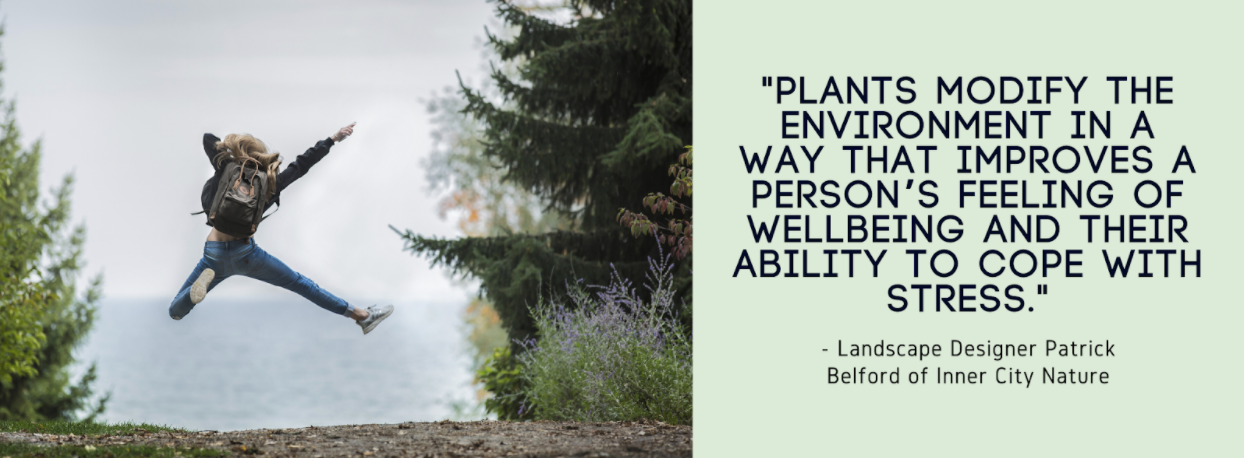
According to Kate McKee in her article “Did you know the positive benefits of green walls?” the benefits of green wall gardens are truly abound. The WellBeing writer explains that “green walls help to encourage biophilia," which is our natural human connection with nature.” McKee writes that as humans, “just being in the vicinity of living plants can make [us] feel more connected to the Earth” and improve our moods. Quoting Patrick Belford of Inner City Nature, McKee notes that plants “modify the environment in a way that improves a person’s feeling of wellbeing and their ability to cope with stress.” It also helps people “‘relax and to feel connected to the natural world.’” Belford explains that studies have shown people “react in a more moderate and mindful way” to stress “when they have plants in their environment.” Because green walls are not demanding in terms of care, they can “provide a low-stress and non-demanding past-time...which is an outlet for meditation and nurturing.”
Physical Health
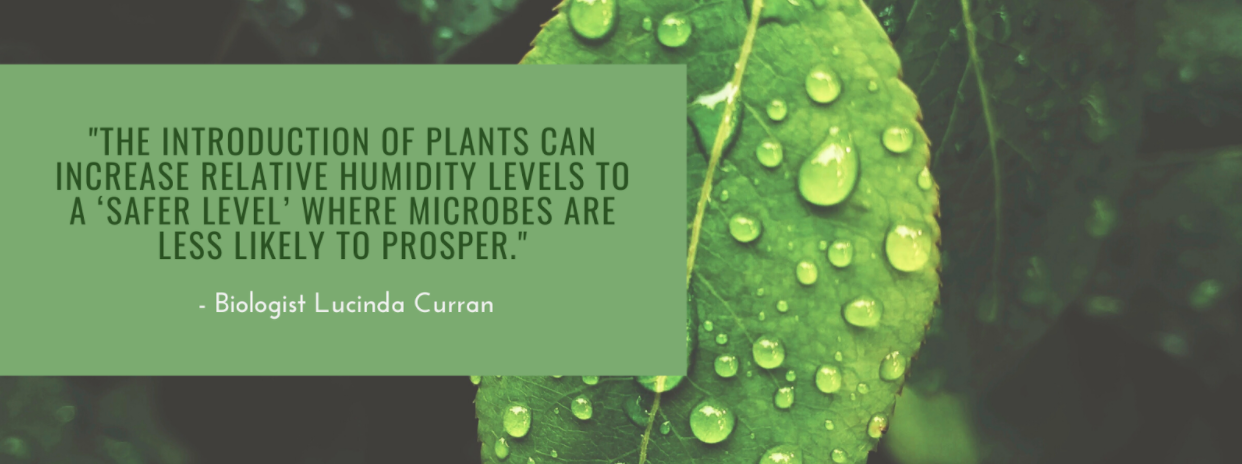
McKee writes that not only are living green walls beautiful and emotionally supportive, but they also improve physical health. Some plants can reduce the concentration of volatile organic compounds in interiors. Removing the chemicals that are off-gassed by cheap, synthetic furniture and building materials is vital to indoor air quality. Purifying the air within your home is especially important, explains biologist Lucinda Curran, because “indoor air can be up to 10 times more polluted than the outdoor air.” McKee explains that “the introduction of plants can [also] increase relative humidity levels to a ‘safer level’ where microbes are less likely to prosper.”
Respira’s Green Wall Gardens
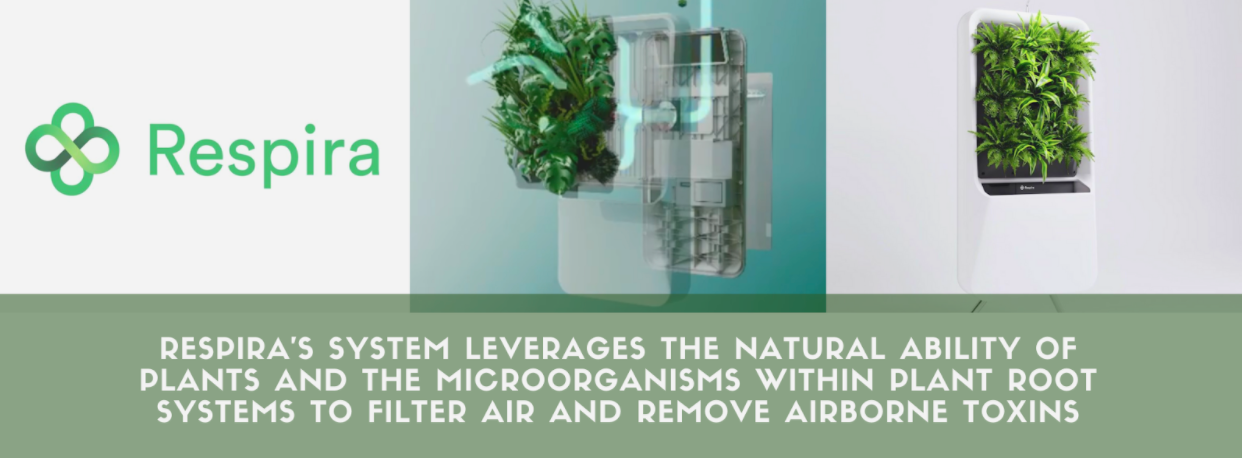
Respira’s green wall gardens offer homes the world’s first living indoor air purification system. Our system is easy to maintain while still providing all the benefits of other green wall gardens. Our system leverages the natural ability of plants and the microorganisms within plant root systems to filter air and remove airborne toxins. This allows residents of a home to breathe better air, increasing health, and overall wellbeing. Unlike other, more unwieldy gardens, Respira’s unit not only improves the health of the home but also fits into home decor. Respira offers physical and emotional health support, quality indoor air, and added aesthetic value to any and every home.

